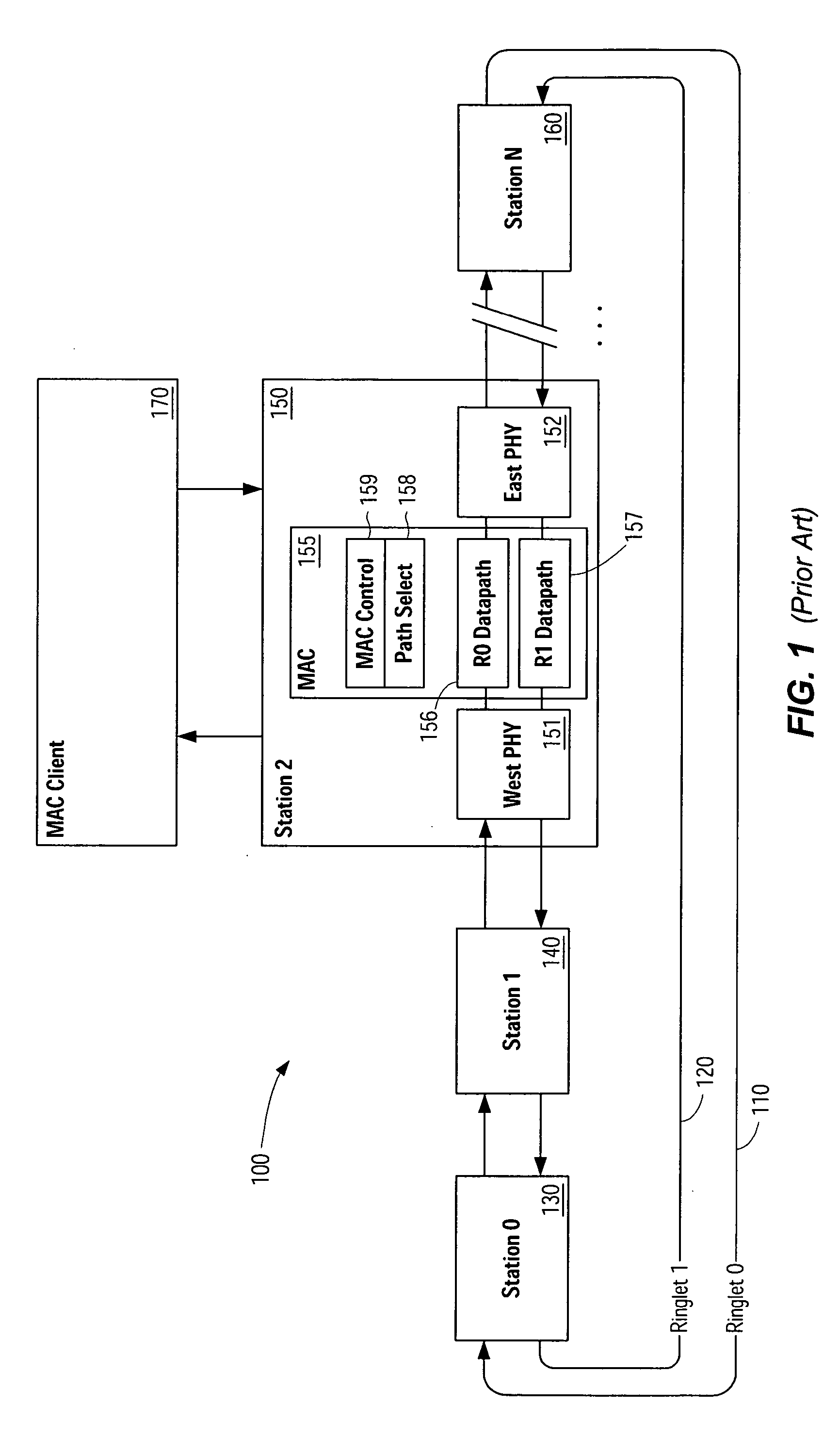Systems and methods for accelerated learning in ring networks
a ring network and learning system technology, applied in the field of communication devices, can solve the problems of increasing the volume of data traffic in mans, challenging the capacity limits of existing transport infrastructures, and increasing the cost of building additional capacity beyond the limits of most carriers' capital expense budgets
- Summary
- Abstract
- Description
- Claims
- Application Information
AI Technical Summary
Benefits of technology
Problems solved by technology
Method used
Image
Examples
Embodiment Construction
[0019] The following sets forth a detailed description of at least the best contemplated mode for carrying out the one or more devices and / or processes described herein. As will also be apparent to one of skill in the art, the operations disclosed herein may be implemented in a number of ways, and such changes and modifications may be made without departing from this invention and its broader aspects. The description is intended to be illustrative and should not be taken to be limiting.
[0020] It will be noted that the variable identifier “N” is used in FIG. 1 to more simply designate the final element (e.g., station N 160) of a series of related or similar elements. The repeated use of such variable identifiers is not meant to imply a correlation between the sizes of such series of elements, although such correlation may exist. The use of such variable identifiers does not require that each series of elements has the same number of elements as another series delimited by the same v...
PUM
 Login to View More
Login to View More Abstract
Description
Claims
Application Information
 Login to View More
Login to View More - R&D
- Intellectual Property
- Life Sciences
- Materials
- Tech Scout
- Unparalleled Data Quality
- Higher Quality Content
- 60% Fewer Hallucinations
Browse by: Latest US Patents, China's latest patents, Technical Efficacy Thesaurus, Application Domain, Technology Topic, Popular Technical Reports.
© 2025 PatSnap. All rights reserved.Legal|Privacy policy|Modern Slavery Act Transparency Statement|Sitemap|About US| Contact US: help@patsnap.com



